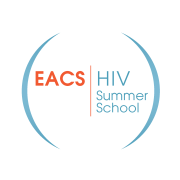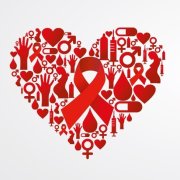Interview with the President for the European Testing week
On the occasion of the Spring European Testing Week 2020, aiming to raise awareness on the benefits of earlier testing for HIV at the European level, the European AIDS Clinical Society (EACS) secretariat interviewed its President, Professor Jürgen Rockstroh, regarding his broad experience on HIV research and care. Besides being EACS President and Professor of Medicine and Head of the HIV Outpatient Clinic at the University of Bonn in Germany, Jürgen Rockstroh is also one of the co-chairs of EuroTEST (the organiser of the European Testing Week). Moreover, he is also involved in HIV research on antiretroviral therapy, including new drug classes; the course of HIV disease in hemophiliacs; and HIV and hepatitis coinfection. Formerly, from 2007-2011, he served as president of the German AIDS Society.
What are the side effects of a late diagnosis?
Late presentation in HIV remains a major concern despite the dramatically improved prognosis realized by antiretroviral combination therapy. It is defined as persons presenting for care with a CD4 cell count below 350 cells/μL or presenting with an AIDS-defining event, regardless of the CD4 cell count. Late presentation of HIV infection is associated with an increased risk of developing AIDS-defining events before the onset of life-saving HIV therapy and leads to reduced overall survival. In addition to that, HIV transmission may occur to others in the period of not knowing the HIV diagnosis. Late presentation of HIV infection reflects the lack of knowledge about HIV and/or cultural and social stigma and socioeconomic barriers that limit access to healthcare.
What do clinicians have to keep in mind when communicating to a person his/her HIV status? How can they support the patient and family throughout the disclosure process?
Remember that any disclosure of an HIV status may lead to stigmatization, discrimination, rejection of, and violence against individuals living with HIV of all ages, as well as their families and partners. Health care workers can help minimize these negative effects by supporting the disclosure process. Allowing enough time for questions and creating an accepting, stigma-free clinic space is crucial. Also facilitating contacts to local community support groups can be very instrumental.
Could you tell us a little about your involvement in HIV research?
My main focus has been around HIV and hepatitis coinfection. In fact, my start in practicing HIV medicine in 1989 coincided with the discovery of hepatitis C. Subsequently, we observed a much faster fibrosis progression and a higher risk of dying from liver disease in HIV/HCV coinfected hemophiliacs. The next 20 years were devoted to better understand the HCV induced immune response, which allowed spontaneous HCV clearance in the minority of patients and to develop HCV treatment strategies for those coming down with chronic hepatitis C infection. Now, 30 years later, all HCV-infected persons can be easily treated with short durations of all oral direct antiviral drug combinations promising HCV cure in more than 95% of all treated subjects. For those with hepatitis B coinfection again an increased risk of dying from liver disease was found in HIV-coinfection. Fortunately, at present, dual active HIV and HBV agents are available which allow complete control of HBV replication. The development of targeted hepatitis and HIV coinfection guidelines under the EACS umbrella have allowed to standardize the management of HIV patients with concomitant viral hepatitis and to contribute to improved management of these particular patients.
In your opinion, which crucial developments have been made in the field of HIV research over the past 20 years?
The main three developments of the last 20 years are 1: introduction of simplified, better tolerated HIV regimens which allow continuous suppressive HIV therapy with one tablet per day with good long-term tolerability; 2: the demonstration that successful HIV therapy prevents onward HIV transmission (undetectable=untransmittable; U=U); 3: the proof that preexposure prophylaxis (PrEP) successfully prevents new HIV infections in individuals with high risk for HIV acquisition.
What are the main challenges to adequate HIV treatment and care? What role can clinicians play in addressing them?
The main challenge to adequate HIV treatment and care are HIV stigma and discrimination. HIV stigma and discrimination affect the emotional well-being and mental health of people living with HIV. People living with HIV often internalize the stigma they experience and begin to develop a negative self-image. HIV internalized stigma can lead to feelings of shame, fear of disclosure, isolation, and despair. Unfortunately, even in 2020 this remains a burning issue in particular as the political environment is changing and different lifestyles and sexual orientations are increasingly becoming or remaining subject of discrimination and criminalization. The health care profession has an ethical duty to avoid engaging in stigmatizing behaviors and a legal duty not to discriminate. To provide maximally effective and ethical HIV testing and care, health care personnel also need to recognize and take into account the realities faced by people living with HIV. Fighting HIV stigma stays a top priority in the HIV arena.
Do you believe that the lessons learned from the HIV epidemic can have a positive impact on the management of new infectious diseases?
Absolutely! Thinking of the current COVID-19 pandemic, a lot can be learned from HIV. In particular, the importance of testing to prevent the further spread of the virus and minimize new infections. Also, the handling of a new infectious agent within a society that is associated with significant mortality reminds us of the early days of the HIV/AIDS epidemic. Moreover, the important role of the community in taking control and combating the HIV epidemic has been a role model for many other chronic diseases. Finally, the example of successful HIV treatment roll-out throughout the world demonstrates how medicine and dedicated care can become available globally for everyone in need.
What do you think is the value of the virtual European HIV-Hepatitis testing week?
Thanks to the ETW diverse online network and by hosting ETW virtual activities, we can continue to raise awareness on the importance of services for HIV, viral hepatitis and sexually transmitted infections, which is even more crucial in times of emergency. In addition, the EWT allows us to create a platform for knowledge-sharing of how organizations have adapted their work in response to the COVID-19 pandemic. The ETW also permits to set up many different testing services throughout Europe and helps to decrease the number of individuals who are HIV-positive but do not know their diagnosis. Finally, the ETW identifies patients with chronic hepatitis and links them to advances in hepatitis treatment. Testing and subsequent linkage to care are clearly the most important pillars in ending the HIV and viral hepatitis epidemic.

20th European AIDS Conference
15-18 October 2025 Paris, France

EACS Guidelines updated
The EACS 12.1 and the app are available for free on



Educational Programme
Training and educating the next generation of clinicians and researchers is an EACS core activity.

EACS Resource Library
Access all scientific content of EACS core activities! (members only)

Interim Guidance
Interim Guidance on the Use of Statin Therapy for the Primary Prevention of Cardiovascular Disease in People with HIV
